Final Assignment
By Kristina Dunbar, UGA
![]()
Part A:
We will consider a triangle ABC and select a random point P inside the triangle. Then we will draw lines through AP, BP, and CP, connecting with the opposite sides as shown in the picture below:
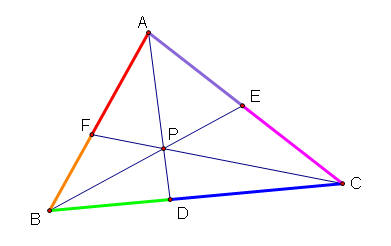
Now, we will investigate (AF)*(BD)*(EC) and (FB)*(DC)*(EA) for various triangles and various points P.
Example One:

Example Two:
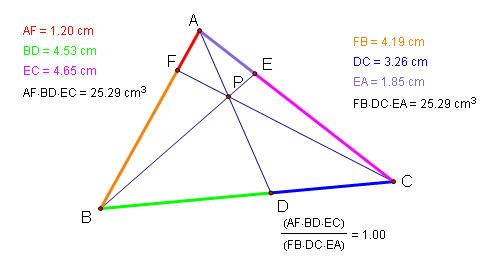
Example Three:
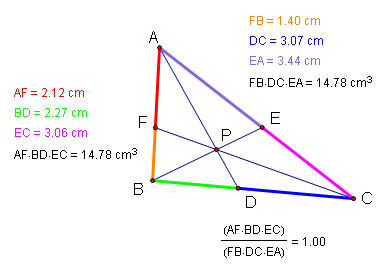
Example Four:
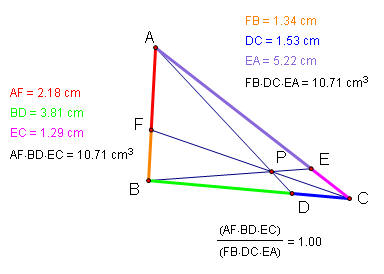
Example Five:
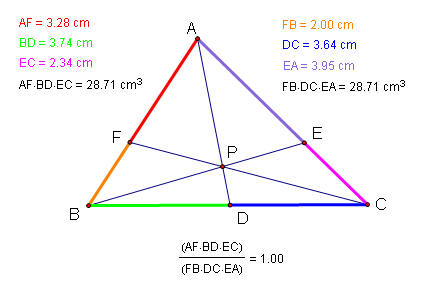
![]()
Part B:
Make a conjecture about the ratio of (AF)*(BD)*(EC) to (FB)*(DC)*(EA) and prove it.
It seems pretty obvious from the examples we looked at in Part A that

But, how can we prove it?
This is actually a statement of Ceva's Theorem, which says that if the points D, E, and F are on the sides BC, AC, and AB of a triangle, then the lines AD, BE, and CF are concurrent if and only if

We can prove this using similar triangles, but we must first extend the lines AD, BE, and CF:
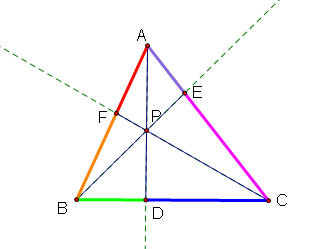
and then create a line going through point A that is parallel to BC:
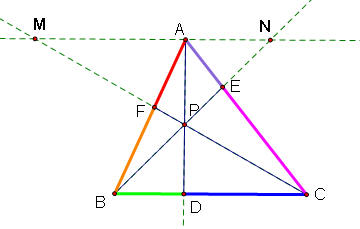
We have labeled the intersection of this new line with CF as M and the intersection of the new line with BE as N.
We can now say that triangle ANE is similar to triangle CBE by angle-angle similarity:
angle AEN = angle CEB because they are vertical angles
angle EBC = angle ANE because they are opposite interior angles between two parallel lines
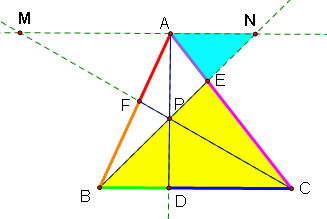
Now that we know these two triangles are similar, we can say that

We can use the same logic to determine that triangles AFM and CBF are similar:
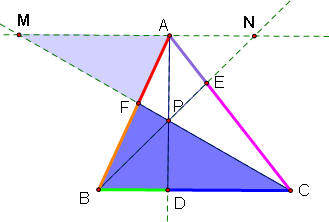

Once again, we can say that triangles AMP and CDP are similar:
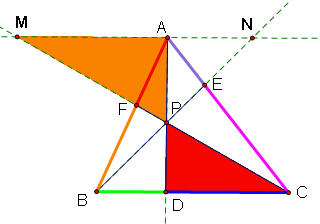

Finally, we also see that triangles BDP and ANP are similar:
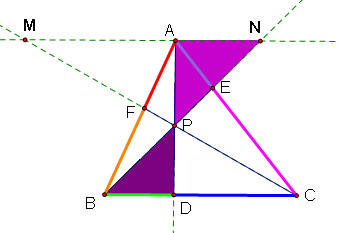

So, now we have a bunch of relationships between segments of the triangle and we can use those to say that

and we can rearrange the above equation to get

Now we have all of the ratios we need to examine the product of

Let's substitute:

We see that everything on the right hand side of the equation cancels out, and we are left with

This proves that the relationship holds and this is an example of Ceva's Theorem.
![]()
What if the point P is outside the triangle? The relationship still holds!
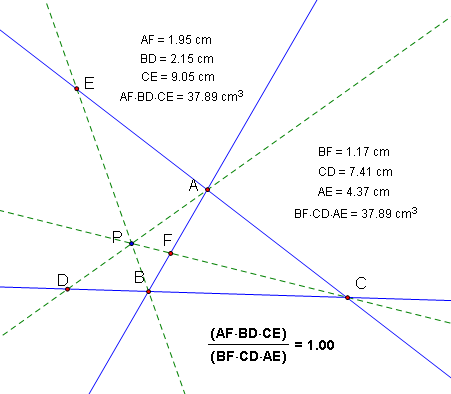
Click here for the GSP sketch, where you can manipulate points A, B, C, and P.
![]()
Part C:
Let's look at the ratios of the area of triangle ABC to triangle DEF:
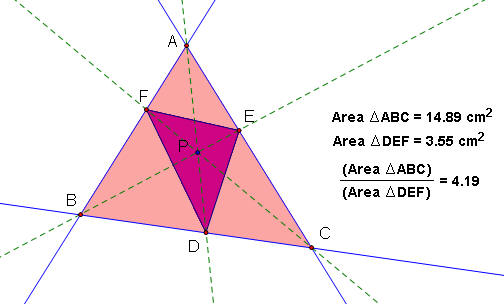
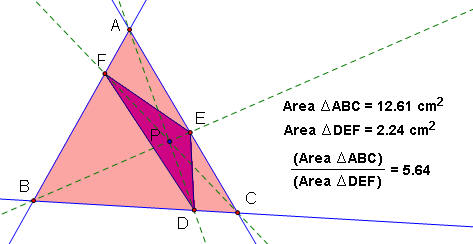
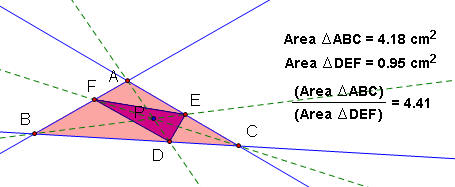
It is always greater than or equal to four!
When is this ratio equal to four?
If you will recall in Assignment 5, we made a script that created the medial triangle and discovered that the medial triangle is always 1/4 the area of the original triangle. The medial triangle is constructed by connecting the midpoints of the sides of the triangle. So, if we want the point P to go through the vertices of the medial triangle, P must be the centroid! The ratios of the area of these triangles is always four!
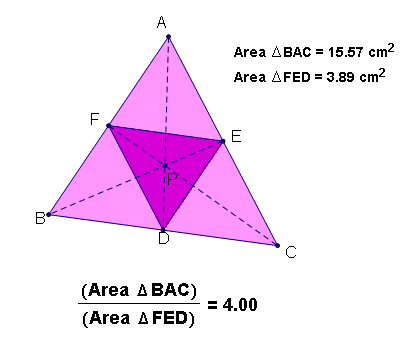
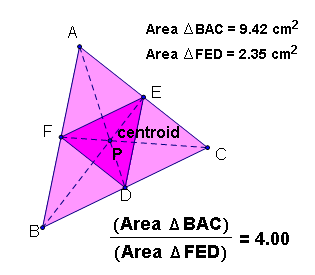
![]()
Return to my Home Page.